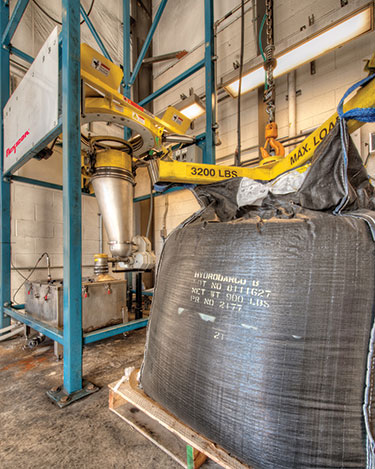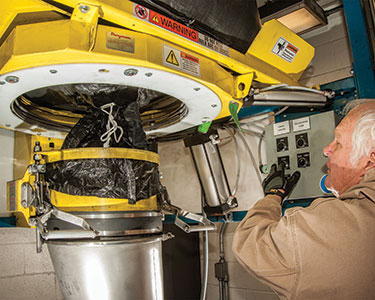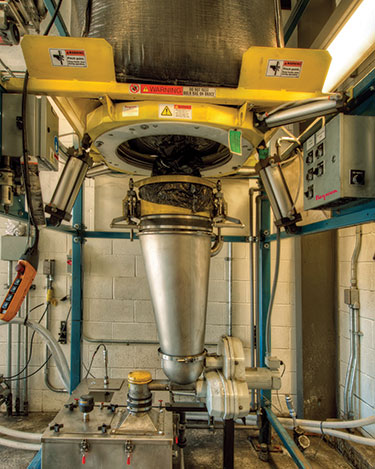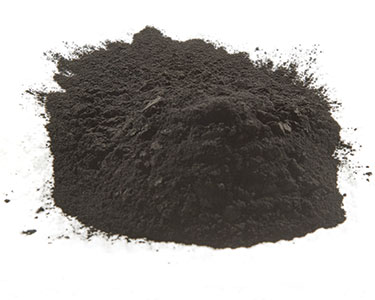 Click to enlarge
Click to enlargeAfter the lifting frame and bulk bag are fastened, an electric hoist and trolley suspended from a cantilevered I-beam lift and position the bag in the discharger frame.
 Click to enlarge
Click to enlargeOperator pulls bag spout through the POWER-CINCHER® control valve, and then onto a SPOUT-LOCK® clamp ring that is raised by a pneumatically powered TELE-TUBE® telescoping tube.
 Click to enlarge
Click to enlargeLoaded and flowing: powdered activated carbon flows from the bulk bag to the volumetric feeder and into Consolidated Mutual Water's treatment system.
 Click to enlarge
Click to enlargeExtremely fine, dust-prone powdered activated carbon adsorbs and removes organic contaminants in the city water that could cause unwanted tastes and odors.


 Click to enlarge
Click to enlarge Click to enlarge
Click to enlarge